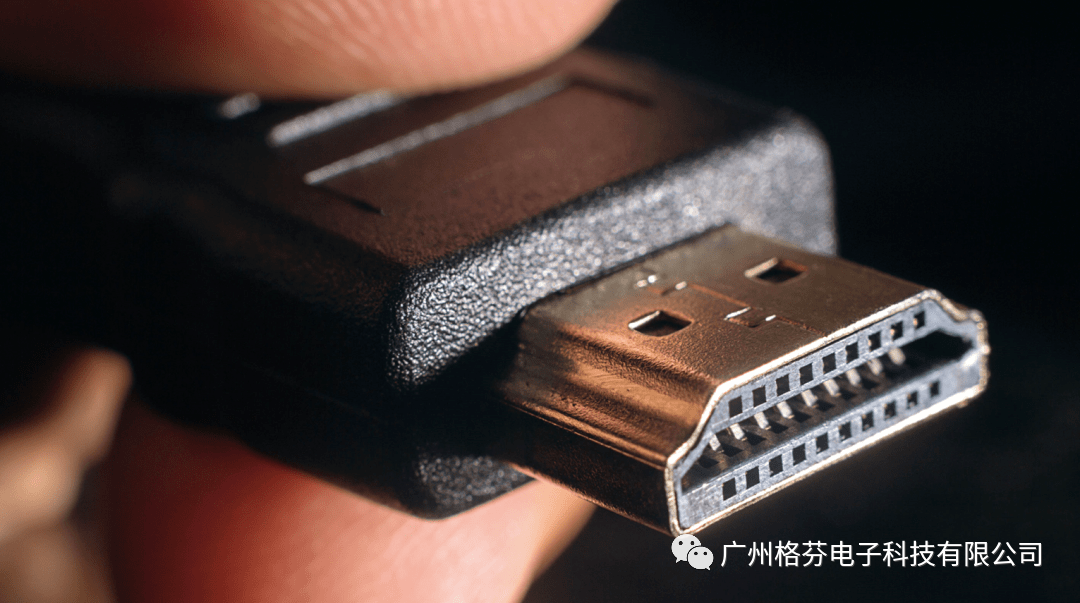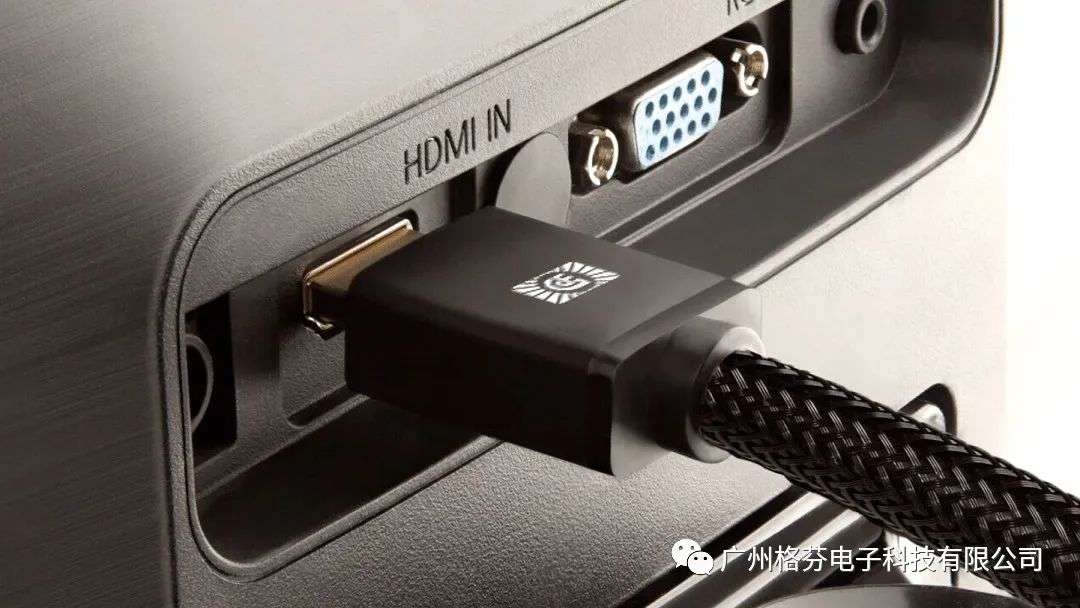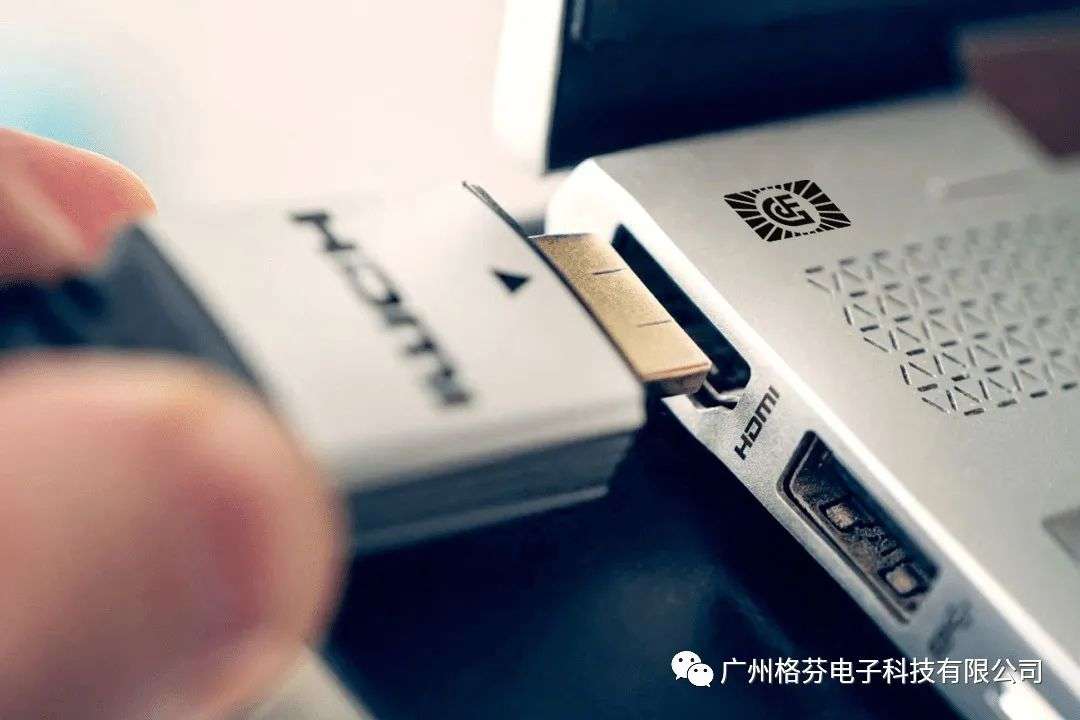For audio-visual enthusiasts, the most familiar device is the HDMI cable and interface. The HDMI specification is exactly 20 years old since version 1.0 was launched in 2002. In the past 20 years, HDMI has become the most popular interface standard in audio-visual equipment. According to official records, 11 billion HDMI devices have been shipped, which is equivalent to nearly two HDMI devices per person in the world.
The biggest advantage of HDMI is the unification of standards. 20 years,The physical size of the standard HDMI interface remains the same,And the software protocol has also achieved thorough backward compatibility,This is quite convenient for large appliances with slower hardware updates,Especially TVs,Even if the TV at home is an old model more than ten years ago,You can also use no transfer,Direct connection to the latest next-generation game console。 Therefore, in recent years, HDMI has quickly replaced the past chromatic aberration, AV, audio and other interfaces on TVs, and has become the most common interface on TVs. According to statistics, in 2021, all TV products on the market will use HDMI technology, and HDMI has also become the best carrier of high-definition formats such as 4K, 8K, and HDR.

In 2021, 8K/4K TVs, monitors, and ancillary devices equipped with HDMI 2.1 ports have developed by leaps and bounds. With the future demand for live broadcasting, online meetings, video calls, VR/AR, games and other entertainment HD, market research company Omdia predicts that the global 4K TV penetration rate will reach 66% in 2022, and by 2025, 8K device shipments will increase by more than 400% compared to 2020. In the particularly competitive Chinese market, HDMI 2.1The interface is basically popular in mid-to-high-end models in 2021, and has become one of the technological breakthroughs of "game TV".
On the occasion of the 20th anniversary of the HDMI standard, the organization that authorizes the HDMI specification (HDMI LA) held a communication event for the Chinese market, at which Rob Tobias, CEO and President of HDMI LA, Chandlee Harrell, President of HDMI Forum, and Brad Bramy, Vice President of Marketing and Operations of HDMI LA, introduced the new features of the HDMI 2.1a specification and the work plan of the HDMI Forum. HDMI cable certification program and international enforcement activities against counterfeit products, and responded to concerns from the Chinese media.

| HDMI 2.1, which we commonly use
SINCE 2019, THE TV INDUSTRY HAS PAVED THE WAY FOR THE LATEST HDMI 2.1, WHICH IS ALREADY STANDARD ON 8K UHD TVS, THE BEST 4K TVS ALSO USE HDMI 2.1 PORTS IN LARGE NUMBERS, AND EVEN THE MOST POPULAR GAMING CONSOLES PS 5 AND XBOX X. HDMI 2.1 bandwidth operates at 48 Gbps, and this increase in bandwidth allows HDMI 2.1 to transmit more information, which means higher resolutions and higher frame rates for images transmitted over HDMI 2.1.
HDMI 2.1 has many other advantages. For example, HDMI 2.1 supports "dynamic HDR" content, which allows HDR metadata content to be adjusted on a frame-by-frame basis. HDMI 2.1 also features eARC, an enhanced audio return channel that transmits high-quality, uncompressed audio signals over an HDMI cable. In addition, HDMI 2.1 features Variable Refresh Rate (VRR) and Fast Frame Transfer (QFT), both of which reduce latency and potentially eliminate input lag entirely.

|HDMI 标准再度更新,版本升级到了HDMI 2.1a
On the CES2022 that has just ended,HDMI standard updated again,The version is upgraded from the current HDMI2.1 to HDMI 2.1a,This upgrade is only HDMI 2.1a to add SBTM function to enhance HDR display effect,In fact, the reason for the main upgrade version should be due to the recent controversy in the HDMI 2.1 name in the market,To avoid the trouble of the same name as USB IF,So I hastily took out HDMI In version 2.1a, we all know that the biggest feature of HDMI 2.1 is that the transmission bandwidth has been greatly increased from 18Gbps to 48Gbps, and it supports new technologies such as dynamic HDR, audio return channel (eARC), variable refresh rate (VRR), fast media switching (QMS), fast frame transfer (QFT), automatic low latency mode (ALLM), VESA DSC 1.2a and other new technologies. At the same time, HDMI 2.1 also requires the purchase of a new HDMI cable to achieve ultra-low electromagnetic emission performance. At this time, some consumers found that the HDMI 2.1 of some monitors and TVs could not support 48Gbps transmission bandwidth, but still stayed at the 18Gbps of HDMI 2.0, like the gap between the sky and the ground. HDMI licensing organizations have also generously admitted that HDMI 2.1 actually has two sub-standards, namely: HDMI 2.1 TMDS-18Gbps and HDMI 2.1 FRL-48Gbps.

What's new in HDMI 2.1a core: SBTM
SBTM for tone mapping for source transmission. HDMI 2.1a introduces source-based tone mapping and is a new feature of HDR. In addition to display tone mapping, the source device can perform partial HDR mapping, a feature that allows the source to emit a video signal that adjusts its output to take full advantage of the HDR capabilities of a particular display, allowing each display to be fully exploited.
SBTM has enhanced the new HDR feature for HDMI-enabled products, further enhancing the high-quality viewing experience for consumers. Not all displays have the same HDR capabilities, and some have a different range of colors and brightness levels than others. This is no problem when sending HDR videos like HDR 10 and HLG. That's because TVs often map HDR content that is beyond the capabilities of the display to the available brightness and color range.

Sometimes, however, the source device needs to combine different types of content, such as HDR, SDR, Dynamic HDR, and graphics at the same time. For example, when you look at the video thumbnail menu of a streaming video service, some of the thumbnails may be HDR, others may be SDR, and the menu is rendered graphically.
When a source device combines different types of content, SBTM enables the source to send a video signal that takes advantage of a specific display's SDR, HDR, and Dynamic HDR capabilities by adjusting its output, thereby leveraging the potential of each display. As with other HDR technologies, SBTM allows the source to be adapted to a specific display, rather than adopting a fixed set of colors and brightness ranges. SBTM also enables PCs and gaming devices to automatically process HDR-optimized signals.

It's worth noting that SBTM can be used with all types of set-top boxes, and many devices can be upgraded with firmware to support SBTM. To activate SBTM, both the transmitting device and the receiving device must support the SBTM function. Of course, around the popularization of new technologies, the media also asked more detailed questions. Rob Tobias, CEO and President of HDMI LA, and Chandlee Harrell, President of HDMI Forum, answered questions one by one.
How compatible is SBTM?
Terminal manufacturers generally have their own HDR algorithms, and the effects presented are also different, so can SBTM be compatible with and match all specifications of HDR? There are many different HDR specifications on the market, and SBTM is designed for different specifications to ensure that it is compatible with HDR of these specifications. The rollout of this feature will also be tested by an authorized test center ATC before it can be implemented.

Can I experience SBTM on an older PC?
SBTM can support PC, can old PCs also work? PC does support SBTM. About how the old PC supports SBTM. First, it can be supported through software updates. Second, because there is a graphics card in the PC, the graphics card needs to be updated by classification.
It should be emphasized that individual PC manufacturers may have different practices, technologies, and plans, so for the sake of insurance, it is best to refer to the official website for how different PC manufacturers, such as Lenovo and Acer support this technology. But for sure, SBTM can support PCs because its main emphasis is on the source side.
Can HDMI 2.1 devices use SBTM?
The answer is yes, many devices can support SBTM through solid upgrades, but both the transmitting and receiving devices must support SBTM in order to work properly.

Upgrading from HDMI 2.0 to HDMI 2.1 delivers significant performance gains, such as a steep increase in interface bandwidth from 18Gbps to 48Gbps to support 7680 ×4320@60Hz (8K@60hz) and 4K@120hz support, and when combined with the latest 4K and 8K displays, HDR and eARC immersive audio technologies, HDMI 2.1 delivers a stunning home entertainment experience. Enhanced gaming features such as Auto Low Latency Mode (ALLM) and Fast Frame Transfer (QFT) deliver a better, more advanced home gaming experience, and more.
However, it is worth noting that being equipped with HDMI 2.1 interface does not mean that this device must support all HDMI 2.1 functions, for example, it has been revealed that some brand TVs are equipped with HDMI 2.1 interface, but it does not support variable refresh rate, automatic low latency mode and other features. In this regard, HDMI LA said that manufacturers can flexibly choose the functions and features of HDMI 2.1 according to the needs of the device, so as to control the cost and product price.

Of course, all licensed products need to be tested and certified at an HDMI Authorized Test Center (ATC), and the product packaging is also displayed with an ultra-high-speed HDMI certification label, and consumers can directly download the HDMI App for inquiries.
In addition, at the analysis meeting, HDMI LA also said that the 4K penetration rate of display devices, including TVs, is growing, and 4K content is also increasing rapidly, and the number of HDMI LA's HDMI 2.1 certified 4K TVs has achieved rapid growth. At the same time, according to Omdia, it is expected that from 2020 to 2025, although the shipment of 8K devices is low, it will increase by more than 400%, UC of which in 2022 all 8K TV shipments in Western Europe accounted for 29%, the United States accounted for 23%, and China accounted for 19%, with the growth of consumer usage, more and more HDMI LA products will be certified to support HDMI 2.1 8K functions.



 :Building 3, Baizhong Creative Park, No. 240 Shilian Road, Panyu District, Guangzhou,Guangdong,China
:Building 3, Baizhong Creative Park, No. 240 Shilian Road, Panyu District, Guangzhou,Guangdong,China :+86 13928186280(Same WeChat/Whatsapp account)
:+86 13928186280(Same WeChat/Whatsapp account) :+86 20-34702140
:+86 20-34702140 